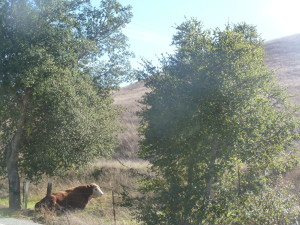 Evergreen has a lot of singularities within its timeline but there are also some overlap in the stories here. We know, and it will be discussed later, about the Valley of Heart’s Delight and orchards that once existed throughout Evergreen. Winemaking makes an appearance in Evergreen in several places. The lesser known and spoken about tradition of civil service and leadership will be portrayed throughout the artwork. A past, present and continued theme and motif you’ll find throughout the Evergreen community is cattle herding and ranching. This will be portrayed in the Evergreen Mural Walk artwork.
Evergreen has a lot of singularities within its timeline but there are also some overlap in the stories here. We know, and it will be discussed later, about the Valley of Heart’s Delight and orchards that once existed throughout Evergreen. Winemaking makes an appearance in Evergreen in several places. The lesser known and spoken about tradition of civil service and leadership will be portrayed throughout the artwork. A past, present and continued theme and motif you’ll find throughout the Evergreen community is cattle herding and ranching. This will be portrayed in the Evergreen Mural Walk artwork.
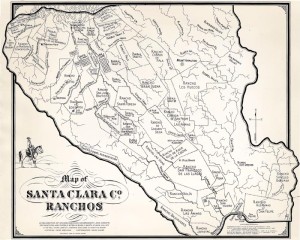 The first cattle herders in Evergreen, and in California, would have been Spanish colonialists and missionaries settling the area. Cows aren’t at all indigenous to California so the Native Americans would’ve been introduced to them at this time. Pueblo de San Jose was established in 1777 in between San Francisco and Monterey naval bases. Expeditions in the late 1760’s into Northern California would’ve necessitated cattle and enough food for the journey. The trip from Monterey to San Jose would’ve passed through Watsonville, Gilroy, Evergreen and into the Santa Clara Valley. This would begin the continued ranching culture in Evergreen.
The first cattle herders in Evergreen, and in California, would have been Spanish colonialists and missionaries settling the area. Cows aren’t at all indigenous to California so the Native Americans would’ve been introduced to them at this time. Pueblo de San Jose was established in 1777 in between San Francisco and Monterey naval bases. Expeditions in the late 1760’s into Northern California would’ve necessitated cattle and enough food for the journey. The trip from Monterey to San Jose would’ve passed through Watsonville, Gilroy, Evergreen and into the Santa Clara Valley. This would begin the continued ranching culture in Evergreen.
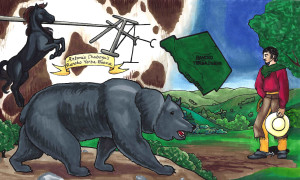 This tradition would be carried by Antonio Chaboya and family into the Mexican Period. Antonio would be granted Rancho Yerba Buena in 1833. In fact, the Chaboyas held rodeos for young stable hands and farm hands which would foster a great relationship between boss and employee, as well as develop their skills on the ranch. Though the Chaboyas maintained ownership into Statehood, squatters would eventually lay claim to the land saying that the property was extravagant grazing lands and the Chaboyas didn’t need, or have right, to all of it. These allegations having the rights to the “American Dream” would empty their coffers and the Chaboyas would part with Rancho Yerba Buena and maintain smaller homesteads.
This tradition would be carried by Antonio Chaboya and family into the Mexican Period. Antonio would be granted Rancho Yerba Buena in 1833. In fact, the Chaboyas held rodeos for young stable hands and farm hands which would foster a great relationship between boss and employee, as well as develop their skills on the ranch. Though the Chaboyas maintained ownership into Statehood, squatters would eventually lay claim to the land saying that the property was extravagant grazing lands and the Chaboyas didn’t need, or have right, to all of it. These allegations having the rights to the “American Dream” would empty their coffers and the Chaboyas would part with Rancho Yerba Buena and maintain smaller homesteads.
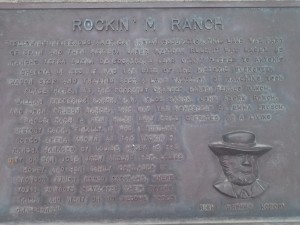 One of the Rancho Yerba Buena squatters, John Aborn, having journeyed to America in 1833, would also host rodeos. It would be a safe presumption that he, too, herded cattle in Evergreen.
One of the Rancho Yerba Buena squatters, John Aborn, having journeyed to America in 1833, would also host rodeos. It would be a safe presumption that he, too, herded cattle in Evergreen.
The rodeos were more than a test of one’s riding skills and bravery. What these rodeos would become in a spread out, rural town like Evergreen were an annual community celebration. These would bring neighbors miles apart together and foster great relationships. The Pueblo would become Downtown San Jose. Large farms would exist outside of town or in other small towns.
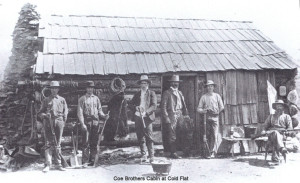 Henry W. Coe would move into Evergreen in the 1850’s, purchasing portions of neighboring Rancho los Hechos, which is the Hall’s Valley/Mt. Hamilton foothills area. Henry Coe’s ranch would eventually extend through the Evergreen hills and into Gilroy. The Coe Family and herd would maintain these hills for several generations. Structures in Henry W. Coe Park, lands donated by Sada Coe Robison, were on the far end of the property. The cattle would graze here into the 1950’s. Hewlett and Packard families would buy acres of this pristine, untouched grazing last and preserve it for future generations.
Henry W. Coe would move into Evergreen in the 1850’s, purchasing portions of neighboring Rancho los Hechos, which is the Hall’s Valley/Mt. Hamilton foothills area. Henry Coe’s ranch would eventually extend through the Evergreen hills and into Gilroy. The Coe Family and herd would maintain these hills for several generations. Structures in Henry W. Coe Park, lands donated by Sada Coe Robison, were on the far end of the property. The cattle would graze here into the 1950’s. Hewlett and Packard families would buy acres of this pristine, untouched grazing last and preserve it for future generations.
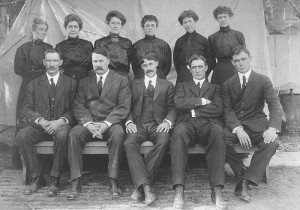 The Kettmann family would move into 2 neighboring Evergreen ranches in the 1870’s, harvesting orchards and grain for the most part. Generations of Kettmann farmers would also work a small vineyard on the property. The large German family also maintain a healthy swath of grazing lands in Mt. Hamilton foothills for their sheep herd. The Kettmanns still own the property til this day. The fluffy herd would travel through town from the Kettmann Ranch, near Evergreen Library, and into the Mt. Hamilton property for generations of ranchers. This set of Kettmann brands were donated to EVC for its collection.
The Kettmann family would move into 2 neighboring Evergreen ranches in the 1870’s, harvesting orchards and grain for the most part. Generations of Kettmann farmers would also work a small vineyard on the property. The large German family also maintain a healthy swath of grazing lands in Mt. Hamilton foothills for their sheep herd. The Kettmanns still own the property til this day. The fluffy herd would travel through town from the Kettmann Ranch, near Evergreen Library, and into the Mt. Hamilton property for generations of ranchers. This set of Kettmann brands were donated to EVC for its collection.
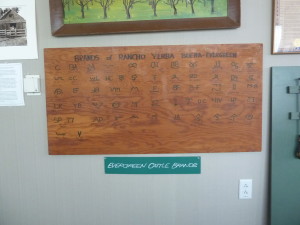 Evergreen Valley College has collected most of the ranching brands from the area for its Heritage Room, found in a side room at the Library Facilities. The Heritage Room was curated by Evergreen Times contributor Colleen Cortese. Evergreen Pioneer families would donate to the museum room. Ranching would be a constant in the Evergreen Valley and hills. Here, they’ve displayed the unique brands from each ranch.
Evergreen Valley College has collected most of the ranching brands from the area for its Heritage Room, found in a side room at the Library Facilities. The Heritage Room was curated by Evergreen Times contributor Colleen Cortese. Evergreen Pioneer families would donate to the museum room. Ranching would be a constant in the Evergreen Valley and hills. Here, they’ve displayed the unique brands from each ranch.
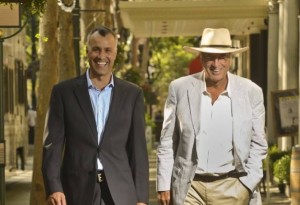 Ranching is a tradition upheld by many old time Evergreen families, like the Richmond and Swenson Families, who maintain cattle ranches today. Why do you think Barry wears the hat?
Ranching is a tradition upheld by many old time Evergreen families, like the Richmond and Swenson Families, who maintain cattle ranches today. Why do you think Barry wears the hat?
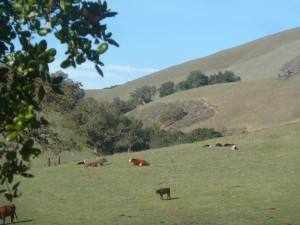 People needed beef, and especially back in the day. The result today is naturally groomed and overall untouched grasslands all over Evergreen. The fact that the Silicon Valley doesn’t look more like San Francisco is incredible to me. Thanks to our civil leadership and awesome Evergreen business people, Downtown San Jose remains densely populated and Evergreen gets a little elbow room, despite development. We have the most beautiful climate, the most Recession proof economy, and open space. To be born here is a miracle. Happy cows indeed.
People needed beef, and especially back in the day. The result today is naturally groomed and overall untouched grasslands all over Evergreen. The fact that the Silicon Valley doesn’t look more like San Francisco is incredible to me. Thanks to our civil leadership and awesome Evergreen business people, Downtown San Jose remains densely populated and Evergreen gets a little elbow room, despite development. We have the most beautiful climate, the most Recession proof economy, and open space. To be born here is a miracle. Happy cows indeed.
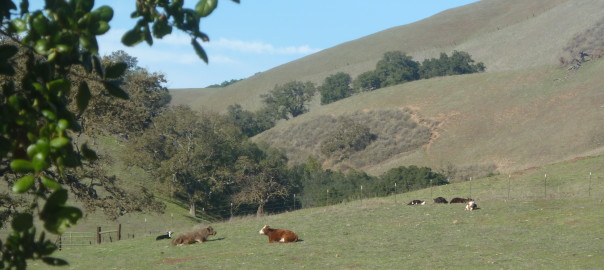
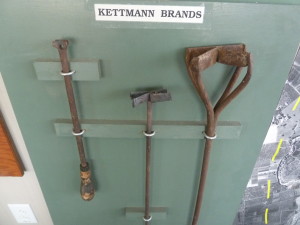
One thought on “Ranching – a redundant theme”